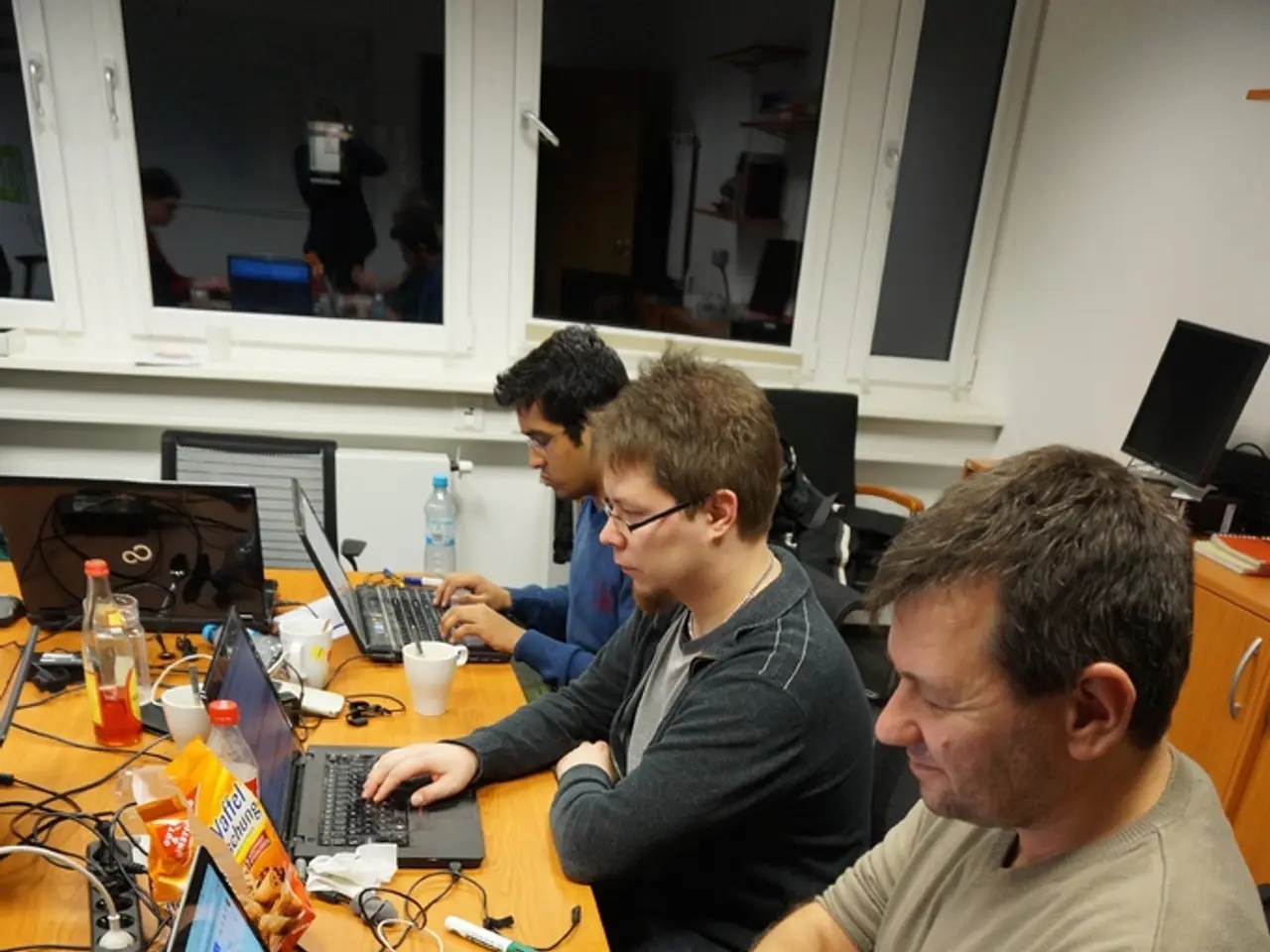Work from Home Security: Perils, Methods, and Optimal Approaches
In today's digital landscape, securing a remote workforce has become a critical concern for businesses worldwide. To effectively protect sensitive data and mitigate risks, a multi-layered approach that combines proactive strategies, smart security tools, and ongoing employee awareness measures is essential.
### Proactive Strategies
Establishing and updating remote work security policies is the foundation of a secure remote work setup. These policies should clearly define security requirements for remote employees regarding device use, data access, and behaviour.
Data Loss Prevention (DLP) solutions are crucial in preventing unauthorized data leaks or exfiltration. DLP tools classify and tag sensitive data, enforce contextual policies based on user roles or devices, and inspect content to prevent data breaches.
Adopting Security Information and Event Management (SIEM) systems helps centralize detection and response by aggregating logs from endpoints, cloud services, and identity platforms. SIEM systems use automation and machine learning to identify and respond to threats in real time, while easing compliance reporting.
Mobile Device Management (MDM) is another essential tool for managing and securing both corporate and personal devices remotely. MDM allows for policy enforcement, software update deployment, and remote wiping of lost devices, ensuring consistent security across all endpoints.
Regular security audits, phishing simulations, penetration testing, and vulnerability scans are crucial for identifying vulnerabilities and improving employee vigilance. Utilizing Security Operations Center (SOC) automation enhances security posture without overloading staff by employing automated tools for continuous monitoring and rapid incident detection.
### Smart Tools
Investing in DLP solutions, SIEM platforms, MDM software, and SOC automation tools provides businesses with advanced security capabilities. Examples of such tools include Microsoft Purview and Symantec DLP for DLP solutions, Splunk and IBM QRadar for SIEM platforms, MobileIron and Microsoft Intune for MDM software, and CrowdStrike and Splunk Phantom for SOC automation tools.
### Ongoing Employee Awareness Measures
Cybersecurity awareness is not a one-time event but an ongoing process that requires continuous training and culture-building. Delivering regular, bite-sized cybersecurity training improves retention and keeps security top-of-mind without disrupting work.
Embedding security into everyday workflows makes safe behaviour seamless and natural. Integrating features like phishing report buttons in email clients and secure file-sharing prompts encourages safe practices.
Fostering a security-first culture encourages employees to pause, question, and report suspicious activities without fear or hesitation. Providing clear guidance empowers employees to make smart security decisions in real time.
Offering real-time support and clear decision frameworks gives employees fast access to security teams and allows them permission to verify unusual requests or flag concerns, reinforcing accountability.
Simulating threats regularly keeps employee awareness sharp and adapt training to emerging threats.
### Summary
Securing a remote workforce requires a multi-layered approach that combines advanced tools like DLP, SIEM, MDM, and SOC automation with robust policies and continuous employee engagement through training and culture-building. Technology must be balanced with empowering employees to act securely and confidently in their daily tasks, making cybersecurity a natural and integral part of remote work.
Key takeaways include implementing strong encryption standards, such as AES-256, for secure data transmission; access control based on the principle of least privilege; using endpoint detection and response (EDR) tools to monitor and respond to security threats on remote devices; recognising the risks associated with phishing and social engineering, shadow IT, unsecured Wi-Fi and public networks, and the increased vulnerability of remote employees working without constant supervision and interaction with colleagues.
Other essential measures include enforcing regular software updates for all devices, encrypting sensitive company data both in transit and at rest, ensuring up-to-date and secure VPN systems, enforcing device encryption to protect data in case of loss or theft, and implementing multi-factor authentication (MFA) for VPN access. Installing and updating antivirus and anti-malware software on all remote devices and using automated patch management tools to ensure timely updates across all devices are also crucial.
Embracing data-and-cloud-computing technologies, such as DLP solutions, SIEM systems, MDM software, and SOC automation tools, is integral to a comprehensive cybersecurity strategy for remote workforces. Additionally, promoting ongoing employee awareness measures, like secure workflow integrations and continuous training, equips employees with the knowledge and confidence to act securely in their daily tasks, making cybersecurity an inherent part of technology use in the remote work landscape.




